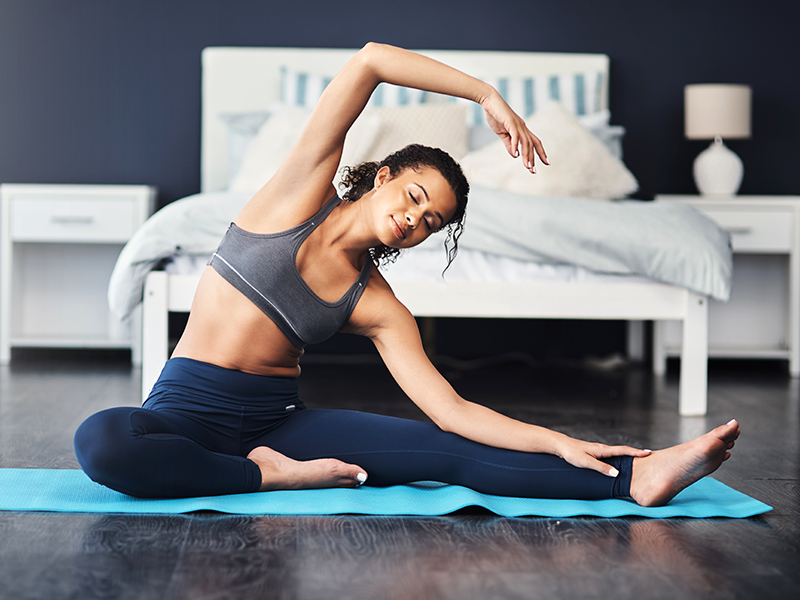Search
Find a Physician
Medically Reviewed by
Christopher Castro, DOBlog
Oct 16, 2025
Stretching can be an incredible form of relief when done right, yet improper technique can do the opposite. You see, a poorly executed stretch won’t just fail to help; it can make things worse by giving you false assurance that you’ve loosened up when, in reality, you’ve just added strain to an already sensitive area.
Understanding the causes of lower back pain is essential to finding lasting relief. Many people overlook how everyday habits, posture, and lifestyle choices contribute to discomfort. Identifying these triggers helps you prevent future problems and choose exercises or treatments that address the root, not just the symptom.
Recognizing these triggers is the first step toward meaningful recovery. In the next section, we’ll focus on practical stretches that target these very issues and help strengthen your lower back safely.
When it comes to back pain, there isn’t a one-size-fits-all solution. The key is understanding what’s causing it and then using safe, consistent methods to ease the tension. From small lifestyle changes to simple home treatments, the goal is to manage discomfort before it becomes something more serious.
Relieving lower back pain often begins with awareness of posture and gentle movement. Sitting correctly, taking breaks to stand, and engaging core muscles can make a surprising difference. You see, these habits reduce strain on your spine and allow muscles to relax naturally, preventing the pain from turning into a long-term issue.
When dealing with back pain from sitting, home remedies can provide genuine relief. Alternating hot and cold packs, practicing gentle yoga, and taking over-the-counter anti-inflammatory medications can help ease discomfort. Moreover, a supportive chair and proper sleep position go a long way. Soon, we’ll explore how specific stretches can safely and effectively deepen this relief.
Physical therapists often recommend specific movements because they target both strength and flexibility in your spine and surrounding muscles. The best stretches for lower back pain work by improving blood flow, reducing stiffness, and restoring balance to the body. They don’t just relieve discomfort—they also prevent future flare-ups by promoting healthier posture and movement patterns.
This classic yoga-inspired move alternates between arching and rounding your spine. It gently mobilizes the lower back while engaging your core. You see, it’s especially helpful for people who sit for long hours. Regularly practicing the Cat-Cow stretch encourages flexibility and can reduce stiffness in the muscles supporting the lumbar region.
Child’s Pose offers immediate relief by elongating the spine and relaxing the lower back muscles. By lowering your hips toward your heels and reaching your arms forward, you stretch the entire back chain. Moreover, this position calms the body, making it an excellent addition to both your morning and bedtime routines.
Simple but powerful, this move helps release built-up tension in the lumbar spine. You lie flat and pull one knee at a time toward your chest, holding the position for a few breaths. This stretch improves circulation and provides instant relief, especially for tight or fatigued lower back muscles.
Among the best stretches for lower back pain, the pelvic tilt stands out for strengthening the core and stabilizing the spine. It’s done by gently pressing your lower back into the floor while engaging your abdominal muscles. Over time, it improves spinal alignment and helps reduce pain caused by muscle imbalances or poor posture.
This gentle twist helps increase mobility and relieve tightness in the lower back. While seated, cross one leg over the other and slowly rotate your torso toward the raised knee. It’s a great way to decompress your spine after sitting for long hours and restore your natural range of motion.
When it comes to preventing lower back pain, consistency is everything. You can’t fix posture or strengthen your core overnight, but small, daily habits make a huge difference. Start with mindful sitting and standing—keep your shoulders back, avoid slouching, and maintain your spine's natural alignment.
You see, movement is medicine for your back. Staying active through walking, swimming, or yoga keeps your muscles engaged and flexible. Even five minutes of stretching each morning can make a significant difference. The key is alternate between sitting and standing, and avoid staying in one position for too long.
To loosen tight lower back muscles, focus on gentle mobility exercises and relaxation techniques. A warm compress or short stretching session after work helps relieve tension before it builds into pain. Also, sleeping on a supportive mattress that maintains spinal alignment can significantly improve how your back feels each morning.
Finally, strengthening your core is your best long-term investment. When your abdominal and back muscles work together, they act as natural armor for your spine. Combine that strength with mindfulness and flexibility, and you’ll not only ease existing discomfort but also make your body resilient against future flare-ups.
The best stretches for lower back pain aren’t just about quick relief—they’re about rebuilding strength, balance, and confidence in your body. When practiced correctly, they restore flexibility and reduce the risk of future strain. Remember, understanding your limits and moving mindfully is what keeps progress safe, sustainable, and genuinely effective in the long run.
Schedule an appointment with the back pain experts at Orthopedic Institute of NJ today to see how safe, effective stretching can help relieve your lower back pain.
OINJ PHYSICIAN’S ADVICE
Dynamic stretching is a great way to activate muscles in the morning. Examples of dynamic stretching are simple squats without weights, birddogs, and deadbugs. These exercises help activate core muscles which can improve spine motion. I counsel patients to not perform active as opposed to static stretches first thing in the morning, since muscles are stiff. Static stretches (such as holding a stretch) can be utilized once you are warmed up or after a cool down.
Christopher Castro, DO
Physiatrist

